Popular categories
Looking for a yarn?

53% Cotton, 33% Viscose, 14% Linen
from 3.05 $ /50g
Order DROPS Belle from Wool Warehouse Direct Ltd
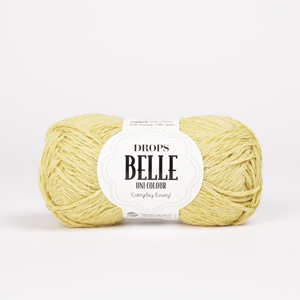
|
DROPS Belle uni colour 53% Cotton, 33% Viscose, 14% Linen |
3.05 $ /50g |
Order |
Clicking the ORDER button will redirect you to Wool Warehouse Direct Ltd website
Order DROPS Buttons

Flowers (wood) No. 628
OrderClicking the ORDER button will redirect you to Wool Warehouse Direct Ltd website
Order DROPS Needles & Hooks
Clicking the ORDER button will redirect you to Wool Warehouse Direct Ltd website
The yarn cost is calculated from the pattern’s smallest size and the yarn’s cheapest product type. Looking for an even better price? You might find it on the DROPS Deals!
Dandelion Heart Cardigan
Knitted short-sleeved jacket in DROPS Belle. The piece is worked top down with raglan, relief-pattern and I-cord. Sizes S - XXXL.
Change language:
English (US/in)- English (US/in)
- Česky
- Dansk
- Deutsch
- Eesti keel
- English (UK/cm)
- Español
- Français
- Íslenska
- Italiano
- Magyar
- Nederlands
- Norsk
- Polski
- Português
- Suomi
- Svenska
- English (UK/cm), Bulgaria
- English (UK/cm), Croatia
- English (UK/cm), Greece
- English (UK/cm), Latvia
- English (UK/cm), Lithuania
- English (UK/cm), Romania
- English (UK/cm), Slovenia
- Česky, Slovakia
#dandelionheartcardigan
DROPS Design: Pattern vs-111Yarn group B
-------------------------------------------------------
SIZES:
S - M - L - XL - XXL - XXXL
YARN:
DROPS BELLE from Garnstudio (belongs to yarn group B)
300-300-350-400-400-450 g color 04, dandelion
BUTTONS:
DROPS BUTTONS NO 628: 5-5-6-6-6-6 items.
NEEDLES:
DROPS CIRCULAR NEEDLES SIZE 4 MM = US 6: Length 40 cm = 16" and 80 cm = 32".
DROPS CIRCULAR NEEDLE SIZE 3 MM = US 2.5: Length 80 cm = 32".
DROPS DOUBLE POINTED NEEDLES SIZE 4 MM = US 6.
DROPS DOUBLE POINTED NEEDLES SIZE 3 MM = US 2.5
The technique MAGIC LOOP can be used – you then only need 80 cm = 32" circular needle in each size.
KNITTING GAUGE:
21 stitches in width and 28 rows in height with stockinette stitch = 10 x 10 cm = 4" x 4".
NOTE: Needle size is only a guide. If you get too many stitches on 10 cm = 4", change to a larger needle size. If you get too few stitches on 10 cm = 4", change to a smaller needle size.
-------------------------------------------------------
Alternative Yarn – See how to change yarns here
Yarn Groups A to F – Use the same pattern and change the yarn here
Yarn usage using an alternative yarn – Use our yarn converter here
-------------------------------------------------------
You might also like...

53% Cotton, 33% Viscose, 14% Linen
from 3.05 $ /50g
Order DROPS Belle from Wool Warehouse Direct Ltd

|
DROPS Belle uni colour 53% Cotton, 33% Viscose, 14% Linen 3.05 $ /50g Order |
Clicking the ORDER button will redirect you to Wool Warehouse Direct Ltd website
Order DROPS Buttons

Flowers (wood) No. 628
OrderClicking the ORDER button will redirect you to Wool Warehouse Direct Ltd website
Order DROPS Needles & Hooks
Clicking the ORDER button will redirect you to Wool Warehouse Direct Ltd website
The yarn cost is calculated from the pattern’s smallest size and the yarn’s cheapest product type. Looking for an even better price? You might find it on the DROPS Deals!
Pattern instructions
EXPLANATIONS FOR THE PATTERN:
-------------------------------------------------------
GARTER STITCH (worked back and forth):
Knit all rows.
1 ridge = knit 2 rows.
BANDS WITH I-CORD:
START OF ROW:
Work the band as follows: Slip 1 stitch purl-wise, with yarn in front, knit 1, work 6 garter stitches.
END OF ROW:
Work the band as follows: Work until there are 8 stitches left on the row, work 6 garter stitches, slip 1 stitch purl-wise with yarn in front, knit 1.
Work in the same way from both the right and wrong side.
PATTERN:
See diagrams A.1 to A.5. Choose diagram for your size. The diagrams show all rows in the pattern from the right side.
RAGLAN:
All increases are worked from the right side!
Increase 1 stitch before/after 2 knitted stitches in each transition between body and sleeves (marker-thread sits between these 2 stitches).
Increase 1 stitch by making 1 yarn over, which is worked twisted on the next row as follows. Then work the new stitches into the pattern on the front and back pieces and in stockinette stitch on the sleeves.
BEFORE MARKER-THREAD:
Purl the back loop. No hole.
AFTER MARKER-THREAD:
Slip the yarn-over off the left needle and replace it the other way round (insert the left needle through the back when replacing it). Purl the front loop. No hole.
DECREASE TIP-1 (for sides of body):
Decrease 1 stitch on each side of the marker-thread: Start 4 stitches before the marker-thread, knit 2 together, work 4 stockinette stitches (marker-thread sits between these 4 stitches), slip 1 stitch knit-wise, knit 1, pass the slipped stitch over the knitted stitch (2 decreased stitches).
DECREASE TIP-2 (mid-under sleeve):
Decrease 1 stitch on each side of the marker-thread as follows: Work until there are 3 stitches left before the marker-thread, knit 2 together, knit 2 (marker thread sits between these 2 stitches) slip 1 stitch knit-wise, knit 1, pass the slipped stitch over the knitted stitch (= 2 stitches decreased).
BUTTONHOLES:
Work buttonholes on the right band (when the garment is worn). Work from the right side when there are 5 stitches left on the row as follows: Make 1 yarn over, knit 2 together, knit 1, slip 1 stitch purl-wise with the strand in front, knit 1. On the next row (wrong side), knit the yarn over to leave a hole.
The first buttonhole is worked on the first row after the neck. The other 4-4-5-5-5-5 buttonholes are then worked with approx. 9-9½-8-8-8½-9 cm = 3½"-3⅝"-3⅛"-3⅛"-3¼"-3½" between each one. The bottom buttonhole is worked in the transition between the stockinette stitch and rib.
-------------------------------------------------------
START THE PIECE HERE:
-------------------------------------------------------
JACKET – SHORT OVERVIEW OF THE PIECE.
The pattern uses both long and short circular needles; start with the length which fits the number of stitches and change when necessary.
The neck and yoke are worked back and forth with circular needle, from mid front and top down. The yoke is divided for body and sleeves and the body continued back and forth with circular needle, while the sleeves wait. The sleeves are worked in the round, top down.
NECK:
Cast on 126-126-130-130-146-146 stitches with circular needle size 3 MM = US 2.5 and DROPS Belle. Purl 1 row from the wrong side. Work as follows from the right side: 8 stitches according to BANDS WITH I-CORD – read above, * knit 2, purl 2 *, work from *-* until there are 10 stitches left, knit 2 and 8 stitches according to bands with I-cord.
Continue this rib for 3 cm = 1⅛".
Insert 1 marker inside the band. The yoke is measured from here.
YOKE:
Change to circular needle size 4 MM = US 6. Insert 4 marker-threads while working from the right side as follows:
Work 8 band stitches as before, 17-17-17-17-21-21 stockinette stitches and increase 1-1-3-3-1-1 stitches evenly spaced, insert 1 marker-thread before the next stitch (left front piece), work 20-20-20-20-24-24 stockinette stitches and increase 0-0-2-2-2-2 stitches evenly spaced, insert 1 marker-thread before the next stitch (sleeve), work 36-36-40-40-40-40 stockinette stitches and increase 1-1-1-1-3-3 stitches evenly spaced, insert 1 marker-thread before the next stitch (back piece), work 20-20-20-20-24-24 stockinette stitches and increase 0-0-2-2-2-2 stitches evenly spaced, insert 1 marker-thread before the next stitch (sleeve), work 17-17-17-17-21-21 stockinette stitches and increase 1-1-3-3-1-1 stitches evenly spaced, 8 band stitches as before (right front piece) – remember the BUTTONHOLES on the right band – read description above = 129-129-141-141-155-155 stitches.
Each marker-thread sits between 2 knitted stitches from the rib (seen from the right side). Purl back from the wrong side with the 8 band stitches on each side worked as before.
Now work PATTERN and increase for RAGLAN – read description above, i.e., work as follows from the right side: 8 band stitches as before, work A.1, increase for raglan on each side of the marker-thread (i.e., each side of 2 stockinette stitches), work 18-18-20-20-24-24 stockinette stitches (sleeve), increase for raglan on each side of the marker-thread, work A.2, A.3, A.4, increase for raglan on each side of the marker-thread, work 18-18-20-20-24-24 stockinette stitches (sleeve), increase for raglan on each side of the marker-thread, work A.5, finish with 8 band stitches as before = 137-137-149-149-163-163 stitches. REMEMBER THE KNITTING GAUGE!
Continue this pattern back and forth, with A.1/A.5 on the front pieces, A.2/A.3/A.4 on the back piece, stockinette stitch on the sleeves and 8 band stitches as before on each side. In addition, continue to increase for raglan on each side of all 4 marker-threads every 2nd row (each row from the right side) a total of 20-23-26-27-21-17 times, including the first increase = 289-313-349-357-323-291 stitches.
NOTE: When the diagrams are finished in height, repeat them - making sure they are neatly above each other.
Continue increasing for raglan, but every 2nd increase is only on the front and back pieces, i.e., increase on the front and back pieces every 2nd row and on the sleeves every 4th row (alternately 4 and 8 increased stitches). Increase like this 4-4-2-4-14-22 times on the front and back pieces (2-2-1-2-7-11 times on the sleeves).
After the last increase there are 313-337-361-381-407-423 stitches and the yoke measures approx. 17-19-20-22-25-28 cm = 6¾"-7½"-8"-8¾"-9¾"-11" from the marker.
In sizes XXL and XXXL The yoke is finished. In sizes S, M, L and XL continue working without further increases until the yoke measures 19-20-21-23 cm = 7½"-8"-8¼"-9".
Now divide for the body and sleeves: Work 51-54-57-60-66-70 stitches as before (front piece), place the next 62-68-74-78-80-80 stitches on 1 thread for the sleeve, cast on 6-8-10-14-16-20 stitches (in side under sleeve), work 87-93-99-105-115-123 stitches (back piece), place the next 62-68-74-78-80-80 stitches on 1 thread for the sleeve, cast on 6-8-10-14-16-20 stitches (in side under sleeve), work the last 51-54-57-60-66-70 stitches as before (front piece). The body and sleeves are finished separately. The piece is now measured from here!
BODY:
= 201-217-233-253-279-303 stitches. Insert 1 marker-thread 54-58-62-67-74-80 stitches in from each side, with 93-101-109-119-131-143 stitches between the marker-threads on the back piece. Allow the marker-threads to follow your work onwards – they are used when decreasing each side.
Continue the pattern on the front and back pieces as far as possible under the sleeves, working the stitches which don’t fit into the pattern in stockinette stitch.
When the body measures 4 cm = 1½" from the division, decrease 2 stitches on each side – read DECREASE TIP-1. Decrease like this every 4 cm = 1½" a total of 3 times = 189-205-221-241-267-291 stitches (stitches which don’t fit into the pattern under sleeves are worked in stockinette stitch).
Work until the body measures 17-18-18-18-17-16 cm = 6¾"-7"-7"-7"-6¾"-6¼" from the division.
Knit 1 row from the right side and increase 17-21-21-25-27-27 stitches evenly spaced (bands worked as before and do not increase over the bands) = 206-226-242-266-294-318 stitches.
Change to circular needle size 3 MM = US 2.5.
Work as follows from the wrong side: 8 band stitches as before, * purl 2, knit 2 *, work from *-* until there are 10 stitches left, purl 2, 8 band stitches as before. Continue this rib for 4 cm = 1½". Bind off. The jacket measures approx. 44-46-48-50-52-54 cm = 17¼"-18"-19"-19¾"-20½"-21¼" from the shoulder.
SLEEVES:
Place the 62-68-74-78-80-80 stitches from the thread on one side of the piece on circular needle/double pointed needles size 4 MM = US 6 and knit up 1 stitch in each of the 6-8-10-14-16-20 stitches cast-on under the sleeve = 68-76-84-92-96-100 stitches.
Insert 1 marker-thread in the middle of the 6-8-10-14-16-20 stitches under the sleeve.
Start by the marker-thread and work stockinette stitch in the round.
When the sleeve measures 2 cm = ¾" from the division, decrease 2 stitches under the sleeve – read DECREASE TIP-2. Repeat the decrease when the sleeve measures 4 cm = 1½" = 64-72-80-88-92-96 stitches.
Work until the sleeve measures 15-15-15-14-12-10 cm = 6"-6"-6"-5½"-4¾"-4" from the division. There is 4 cm = 1½" left. Try the jacket on and work to desired length before the rib.
Knit 1 round and decrease 0-4-4-4-0-0 stitches evenly spaced = 64-68-76-84-92-96 stitches.
Change to double pointed needles size 3 MM = US 2.5. Work rib (knit 2, purl 2) for 4 cm = 1½". Bind off a little loosely. The sleeve measures approx. 19-19-19-18-16-14 cm = 7½"-7½"-7½"-7"-6¼"-5½" from the division.
ASSEMBLY:
Sew the buttons onto the left band.
Diagram
All measurements in charts are in cm.

|
= knit from right side, purl from wrong side |

|
= purl 3 together, do not slip the stitches from the needle but knit together the same stitches, then purl them together one more time, slip all 3 stitches from the left needle |




What can you do with our patterns? You can share DROPS patterns online, using the pattern original picture, materials, name and number. But you are NOT ALLOWED to reproduce the complete pattern digitally in any way. Yarn stores are welcome to use the DROPS pattern database to promote the sale of our assortment. You can print out our patterns, make as many copies as you’d like. The only thing we ask is that you don't make any changes / additions to the original printed document. And that the patterns according to the DROPS philosophy are given out to the consumers for free. Editorials that wish to publish our patterns in printed books or magazines can contact us for more information. The sale of garments based on DROPS patterns is permitted as long as they are sold as single items or per order. Further commercial use of the patterns is not permitted. It has to be clearly stated that the garment is made based on a design from DROPS DESIGN. The use of clothing labels of which DROPS DESIGN forms part is conditioned by the inclusion of the following text: “A DROPS DESIGN made by …..”. The use of DROPS photos for marketing purposes/sales is only permitted in connection with the use/sale of DROPS products. The photos may not be cut or edited and the logo should be clearly visible.
We reserve the right to withdraw the permission for use of our patterns at any time, notwithstanding the reason.
Each of our patterns has specific tutorial videos to help you.
These step-by-step tutorials might also help you:
Why is the knitting/crochet tension so important?
Knitting tension is what determines the final measurements of your work, and is usually measured per 10 x 10 cm. It is provided like so: number of stitches in width x number of rows in height - eg: 19 stitches x 26 rows = 10 x 10 cm.
The knitting tension is very individual; some people knit/crochet loosely while others work tightly. You adjust the knitting tension with the needle size, which is why the suggested needle size only serve as a guide! You need to adjust this (up or down) to ensure that YOUR knitting tension matches the knitting tension provided in the pattern. If you work with a different knitting tension than provided you will have a different yarn consumption, and your work will have different measurements than what the pattern suggests.
The knitting tension also determines which yarns can replace each other. As long as you achieve the same knitting tension you can replace one yarn with another.
See DROPS lesson: How to measure your tension/gauge
See DROPS video: How to make a gauge tension swatch
How do I know how many balls of yarn I need?
The required amount of yarn is provided in grams, eg: 450 g. To calculate how many balls you’ll need you first need to know how many grams are in 1 ball (25g, 50g or 100g). This information is available if you click on the individual yarn quality on our pages. Divide the amount required with the amount of each ball. For example, if each ball is 50g (the most common amount), the calculation will be as follows: 450 / 50 = 9 balls.
Can I use a different yarn than what the pattern suggests?
The important thing when changing from one yarn to another is that the knitting/crochet tension remains the same. This is so that the measurements of the finished piece will be the same as on the sketch provided. It is easier to achieve the same knitting tension using yarns from the same yarn group. It is also possible to work with multiple strands of a thinner yarn to achieve the knitting tension of a thicker one. Please try our yarn converter. We recommend you to always work a test swatch.
Please NOTE: when changing yarn the garment might have a different look and feel to the garment in the photo, due to individual properties and qualities of each yarn.
See DROPS lesson: Can I use a different yarn than the one mentioned in the pattern?
What are the yarn groups?
All our yarns are categorised into yarn groups (from A to F) according to thickness and knitting tension – group A contains the thinnest yarns and group F the thickest. This makes it easier for you to find alternative yarns to our patterns, should you wish to switch yarn. All yarns within the same group have a similar knitting tension and can easily replace each other. However, different yarn qualities have different structures and properties which will give the finished work a unique look and feel.
How do I use the yarn converter?
At the top of all our patterns you’ll find a link to our yarn converter, which is a helpful tool should you wish to use a different yarn than suggested. By filling in the yarn quality you wish to replace, the amount (in your size) and number of strands, the converter will present good alternative yarns with the same knitting tension. Additionally it will tell you how much you’ll require in the new qualities and whether you’ll need to work with multiple strands. Most skeins are 50g (some are 25g or 100g).
If the pattern is worked with multiple colours, every colour will have to be converted separately. Similarly, if the pattern is worked with several strands of different yarns (for example 1 strand Alpaca and 1 strand Kid-Silk) you will have to find alternatives for each, individually.
Why do you show discontinued yarns in the patterns?
Since different yarns have different qualities and textures we have chosen to keep the original yarn in our patterns. However, you can easily find options among our available qualities by using our yarn converter, or simply pick a yarn from the same yarn group.
It is possible that some retailers still have discontinued yarns in stock, or that someone has a few skeins at home that they would like to find patterns for.
The yarn converter will provide both alternative yarn as well as required amount in the new quality.
What size should I knit?
If you think it's hard to decide what size to make, it can be a good idea to measure a garment you own already and like the size of. Then you can pick the size by comparing those measures with the ones available in the pattern's size chart.
You'll find the size chart at the bottom of the pattern.
See DROPS lesson: How to read size chart
Why do I get the wrong knitting tension with the suggested needle size?
The needle size provided in the pattern serves only as a guide, the important thing is to follow the knitting tension. And since knitting tension is very individual, you will have to adjust the needle size to ensure that YOUR tension is the same as in the pattern – maybe you’ll have to adjust 1, or even 2 needle sizes, up or down to achieve the correct tension. For this, we recommend that you work test swatches.
Should you work with a different knitting tension than the one provided, the measurements of the finished garment might deviate from the measurement sketch.
See DROPS lesson: How to measure your tension/gauge
See DROPS video: How to make a gauge tension swatch
Why is the pattern worked top-down?
Working a garment top-down provides more flexibility and room for personal adjustment. For example it is easier to try the garment on while working, as well as making adjustments to length of yoke and shoulder caps.
The instructions are carefully explaining every step, in the correct order. Diagrams are adjusted to the knitting direction and are worked as usual.
How do I work according to a knitting diagram?
The diagram depicts all rows/rounds, and every stitch seen from the right side. It is read from bottom to top, from right to left. 1 square = 1 stitch.
When working back and forth, every other row is worked from the right side and every other row is worked from the wrong side. When working from the wrong side, the diagram will have to be worked reversed: from left to right, knit stitches are purled, purl stitches are knit etc.
When working in the round every round is worked from the right side and the diagram are worked from right to left on all rounds.
See DROPS lesson: How to read knitting diagrams
How do I work according to a crochet diagram?
The diagram depicts all rows/rounds, and every stitch seen from the right side. It is worked from bottom to top, from right to left.
When working back and forth every other row is worked from the right side: from right to left and every other row is worked from the wrong side: from left to right.
When working in the round, every row in the diagram are worked from the right side, from right to left.
When working a circular diagram you start in the middle and work your way outwards, counter clockwise, row by row.
The rows usually start with a given number of chain stitches (equivalent to the height of the following stitch), this will either be depicted in the diagram or explained in the pattern.
See DROPS lesson: How to read crochet diagrams
How do I work several diagrams simultaneously on the same row/round?
Instructions for working several diagrams after each other on the same row/round, will often be written like so: “work A.1, A.2, A.3 a total of 0-0-2-3-4 times". This means you work A.1 once, then A.2 is worked once, and A.3 is repeated (in width) the number of times provided for your size – in this case like so: S = 0 times, M = 0 times, L=2 times, XL= 3 times and XXL = 4 times.
The diagrams are worked as usual: begin with the first row in A.1, then work the first row in A.2 etc.
See DROPS lesson: How to read knitting diagrams
See DROPS lesson: How to read crochet diagrams
Why are the sleeves shorter in larger sizes?
The total width of the garment (from wrist-to-wrist) will be larger in the larger sizes, despite the actual sleeves being shorter. The larger sizes have longer sleeve caps and wider shoulders, so there will be a good fit in all sizes.
Where on the garment is the length measured?
The measurement sketch/schematic drawing provides information regarding the full length of the garment. If it’s a jumper or a jacket the length is measured from the highest point on the shoulder (usually closest to the neckline), and straight down to the bottom of the garment. It is NOT measured from the tip of shoulder. Similarly, the length of yoke is measured from the highest point on the shoulder and down to where yoke is split into body and sleeves.
See DROPS lesson: How to read a schematic drawing
What is a repeat?
Diagrams are often repeated on the round or in height. 1 repeat is the diagram the way it appears in the pattern. If it says to work 5 repeats of A.1 in the round, then you work A.1 a total of 5 times after/next to each other in the round. If it says to work 2 repeats of A.1 vertically/in height you work the entire diagram once, then begin again at the start and work the entire diagram one more time.
Why does the piece start with more chain stitches than it’s worked with?
Chain stitches are slightly narrower than other stitches and to avoid working the cast-on edge too tight, we simply chain more stitches to begin with. The stitch count will be adjusted on the following row to fit the pattern and measurement sketch.
Why increase before the rib edge when the piece is worked top-down?
The rib edge is more elastic and will contract slightly compared to, for example, stocking stitch. By increasing before the rib edge, you avoid a visible difference in width between the rib edge and the rest of the body.
Why increase in the cast-off edge?
It’s very easy to cast off too tightly, and by making yarn overs while casting off (and simultaneously casting these off) you avoid a too tight cast off edge.
See DROPS video: How to bind off with yarn overs (yo)
How do I increase/decrease on every 3rd and 4th row/round alternately?
To achieve an even increase (or decrease) you can increase on, for example: every 3rd and 4th row alternately, like so: work 2 rows and increase on the 3rd row, work 3 rows and increase on the 4th. Repeat this until the increase is complete.
See DROPS lesson: Increase or decrease 1 st on every 3rd and 4th row alternately
How can I work a jacket in the round instead of back and forth?
Should you prefer to work in the round instead of back and forth, you may of course adjust the pattern. You’ll need to add steeks mid-front (usually 5 stitches), and follow the instructions. When you would normally turn and work from the wrong side, simply work across the steek and continue in the round. At the end you’ll cut the piece open, pick up stitches to work bands, and cover the cut edges.
See DROPS video: How to knit steeks and cut open
Can I work a jumper back and forth instead of in the round?
Should you prefer to work back and forth instead of in the round, you may of course adjust the pattern so you work the pieces separately and then assemble them at the end. Divide the stitches for the body in 2, add 1 edge stitch in each side (for sewing) and work the front and back pieces separately.
See DROPS lesson: Can I adapt a pattern for circular needles into straight needles?
Why is the pattern slightly different than what I see in the photo?
Pattern repeats can vary slightly in the different sizes, in order to get the correct proportions. If you’re not working the exact same size as the garment in the photo, yours might deviate slightly. This has been carefully developed and adjusted so that the complete impression of the garment is the same in all sizes.
Make sure to follow instructions and diagrams for your size!
How do I make a women’s size garment into a men’s size one?
If you have found a pattern you like which is available in women’s size it’s not very difficult to convert it to men’s size. The biggest difference will be the length of sleeves and body. Start working on the women size that you think would fit across the chest. The additional length will be worked right before you cast off for the armhole/sleeve cap. If the pattern is worked top-down you can add the length right after the armhole or before the first decrease on sleeve.
Regarding additional yarn amount, this will depend on how much length you add, but it is better with a skein too many than too few.
How do I prevent a hairy garment from shedding?
All yarns will have excess fibres (from production) that might come off as lint or shedding. Brushed yarns (ie hairier yarns) have more of these loose, excess fibres, causing more shedding.
Shedding also depends on what is worn under or over the garment, and whether this pulls at the yarn fibres. It’s therefore not possible to guarantee that there will be no shedding
Below are some tips on how to get the best result when working with hairier yarns:
1. When the garment is finished (before you wash it) shake it vigorously so the looser hairs come off. NOTE: do NOT use a lint roller, brush or any method that pulls at the yarn.
2. Place the garment in a plastic bag and put it in your freezer - the temperature will cause the fibres to become less attached to each other, and excess fibres will come off easier.
3. Leave in the freezer for a few hours before taking it out and shaking it again.
4. Wash the garment according to the instructions on the yarn label.
Why does my garment pill?
Pilling is a natural process that happens to even the most exclusive of fibers. It's a natural sign of wear and tear that is hard to avoid, and that is most visible in high friction areas of your garment like a sweater's arms and cuffs.
You can make your garment look as new by removing the pilling, using a fabric comb or a pill/lint remover.
In the meantime, you can read the questions and answers that others have left to this pattern or join the DROPS Workshop on Facebook to get help from fellow knitters/crocheters!
Dandelion Heart Cardigan |
|||||||
 |
 |
||||||
Knitted short-sleeved jacket in DROPS Belle. The piece is worked top down with raglan, relief-pattern and I-cord. Sizes S - XXXL.
DROPS 249-20 |
|||||||
|
------------------------------------------------------- EXPLANATIONS FOR THE PATTERN: ------------------------------------------------------- GARTER STITCH (worked back and forth): Knit all rows. 1 ridge = knit 2 rows. BANDS WITH I-CORD: START OF ROW: Work the band as follows: Slip 1 stitch purl-wise, with yarn in front, knit 1, work 6 garter stitches. END OF ROW: Work the band as follows: Work until there are 8 stitches left on the row, work 6 garter stitches, slip 1 stitch purl-wise with yarn in front, knit 1. Work in the same way from both the right and wrong side. PATTERN: See diagrams A.1 to A.5. Choose diagram for your size. The diagrams show all rows in the pattern from the right side. RAGLAN: All increases are worked from the right side! Increase 1 stitch before/after 2 knitted stitches in each transition between body and sleeves (marker-thread sits between these 2 stitches). Increase 1 stitch by making 1 yarn over, which is worked twisted on the next row as follows. Then work the new stitches into the pattern on the front and back pieces and in stockinette stitch on the sleeves. BEFORE MARKER-THREAD: Purl the back loop. No hole. AFTER MARKER-THREAD: Slip the yarn-over off the left needle and replace it the other way round (insert the left needle through the back when replacing it). Purl the front loop. No hole. DECREASE TIP-1 (for sides of body): Decrease 1 stitch on each side of the marker-thread: Start 4 stitches before the marker-thread, knit 2 together, work 4 stockinette stitches (marker-thread sits between these 4 stitches), slip 1 stitch knit-wise, knit 1, pass the slipped stitch over the knitted stitch (2 decreased stitches). DECREASE TIP-2 (mid-under sleeve): Decrease 1 stitch on each side of the marker-thread as follows: Work until there are 3 stitches left before the marker-thread, knit 2 together, knit 2 (marker thread sits between these 2 stitches) slip 1 stitch knit-wise, knit 1, pass the slipped stitch over the knitted stitch (= 2 stitches decreased). BUTTONHOLES: Work buttonholes on the right band (when the garment is worn). Work from the right side when there are 5 stitches left on the row as follows: Make 1 yarn over, knit 2 together, knit 1, slip 1 stitch purl-wise with the strand in front, knit 1. On the next row (wrong side), knit the yarn over to leave a hole. The first buttonhole is worked on the first row after the neck. The other 4-4-5-5-5-5 buttonholes are then worked with approx. 9-9½-8-8-8½-9 cm = 3½"-3⅝"-3⅛"-3⅛"-3¼"-3½" between each one. The bottom buttonhole is worked in the transition between the stockinette stitch and rib. ------------------------------------------------------- START THE PIECE HERE: ------------------------------------------------------- JACKET – SHORT OVERVIEW OF THE PIECE. The pattern uses both long and short circular needles; start with the length which fits the number of stitches and change when necessary. The neck and yoke are worked back and forth with circular needle, from mid front and top down. The yoke is divided for body and sleeves and the body continued back and forth with circular needle, while the sleeves wait. The sleeves are worked in the round, top down. NECK: Cast on 126-126-130-130-146-146 stitches with circular needle size 3 MM = US 2.5 and DROPS Belle. Purl 1 row from the wrong side. Work as follows from the right side: 8 stitches according to BANDS WITH I-CORD – read above, * knit 2, purl 2 *, work from *-* until there are 10 stitches left, knit 2 and 8 stitches according to bands with I-cord. Continue this rib for 3 cm = 1⅛". Insert 1 marker inside the band. The yoke is measured from here. YOKE: Change to circular needle size 4 MM = US 6. Insert 4 marker-threads while working from the right side as follows: Work 8 band stitches as before, 17-17-17-17-21-21 stockinette stitches and increase 1-1-3-3-1-1 stitches evenly spaced, insert 1 marker-thread before the next stitch (left front piece), work 20-20-20-20-24-24 stockinette stitches and increase 0-0-2-2-2-2 stitches evenly spaced, insert 1 marker-thread before the next stitch (sleeve), work 36-36-40-40-40-40 stockinette stitches and increase 1-1-1-1-3-3 stitches evenly spaced, insert 1 marker-thread before the next stitch (back piece), work 20-20-20-20-24-24 stockinette stitches and increase 0-0-2-2-2-2 stitches evenly spaced, insert 1 marker-thread before the next stitch (sleeve), work 17-17-17-17-21-21 stockinette stitches and increase 1-1-3-3-1-1 stitches evenly spaced, 8 band stitches as before (right front piece) – remember the BUTTONHOLES on the right band – read description above = 129-129-141-141-155-155 stitches. Each marker-thread sits between 2 knitted stitches from the rib (seen from the right side). Purl back from the wrong side with the 8 band stitches on each side worked as before. Now work PATTERN and increase for RAGLAN – read description above, i.e., work as follows from the right side: 8 band stitches as before, work A.1, increase for raglan on each side of the marker-thread (i.e., each side of 2 stockinette stitches), work 18-18-20-20-24-24 stockinette stitches (sleeve), increase for raglan on each side of the marker-thread, work A.2, A.3, A.4, increase for raglan on each side of the marker-thread, work 18-18-20-20-24-24 stockinette stitches (sleeve), increase for raglan on each side of the marker-thread, work A.5, finish with 8 band stitches as before = 137-137-149-149-163-163 stitches. REMEMBER THE KNITTING GAUGE! Continue this pattern back and forth, with A.1/A.5 on the front pieces, A.2/A.3/A.4 on the back piece, stockinette stitch on the sleeves and 8 band stitches as before on each side. In addition, continue to increase for raglan on each side of all 4 marker-threads every 2nd row (each row from the right side) a total of 20-23-26-27-21-17 times, including the first increase = 289-313-349-357-323-291 stitches. NOTE: When the diagrams are finished in height, repeat them - making sure they are neatly above each other. Continue increasing for raglan, but every 2nd increase is only on the front and back pieces, i.e., increase on the front and back pieces every 2nd row and on the sleeves every 4th row (alternately 4 and 8 increased stitches). Increase like this 4-4-2-4-14-22 times on the front and back pieces (2-2-1-2-7-11 times on the sleeves). After the last increase there are 313-337-361-381-407-423 stitches and the yoke measures approx. 17-19-20-22-25-28 cm = 6¾"-7½"-8"-8¾"-9¾"-11" from the marker. In sizes XXL and XXXL The yoke is finished. In sizes S, M, L and XL continue working without further increases until the yoke measures 19-20-21-23 cm = 7½"-8"-8¼"-9". Now divide for the body and sleeves: Work 51-54-57-60-66-70 stitches as before (front piece), place the next 62-68-74-78-80-80 stitches on 1 thread for the sleeve, cast on 6-8-10-14-16-20 stitches (in side under sleeve), work 87-93-99-105-115-123 stitches (back piece), place the next 62-68-74-78-80-80 stitches on 1 thread for the sleeve, cast on 6-8-10-14-16-20 stitches (in side under sleeve), work the last 51-54-57-60-66-70 stitches as before (front piece). The body and sleeves are finished separately. The piece is now measured from here! BODY: = 201-217-233-253-279-303 stitches. Insert 1 marker-thread 54-58-62-67-74-80 stitches in from each side, with 93-101-109-119-131-143 stitches between the marker-threads on the back piece. Allow the marker-threads to follow your work onwards – they are used when decreasing each side. Continue the pattern on the front and back pieces as far as possible under the sleeves, working the stitches which don’t fit into the pattern in stockinette stitch. When the body measures 4 cm = 1½" from the division, decrease 2 stitches on each side – read DECREASE TIP-1. Decrease like this every 4 cm = 1½" a total of 3 times = 189-205-221-241-267-291 stitches (stitches which don’t fit into the pattern under sleeves are worked in stockinette stitch). Work until the body measures 17-18-18-18-17-16 cm = 6¾"-7"-7"-7"-6¾"-6¼" from the division. Knit 1 row from the right side and increase 17-21-21-25-27-27 stitches evenly spaced (bands worked as before and do not increase over the bands) = 206-226-242-266-294-318 stitches. Change to circular needle size 3 MM = US 2.5. Work as follows from the wrong side: 8 band stitches as before, * purl 2, knit 2 *, work from *-* until there are 10 stitches left, purl 2, 8 band stitches as before. Continue this rib for 4 cm = 1½". Bind off. The jacket measures approx. 44-46-48-50-52-54 cm = 17¼"-18"-19"-19¾"-20½"-21¼" from the shoulder. SLEEVES: Place the 62-68-74-78-80-80 stitches from the thread on one side of the piece on circular needle/double pointed needles size 4 MM = US 6 and knit up 1 stitch in each of the 6-8-10-14-16-20 stitches cast-on under the sleeve = 68-76-84-92-96-100 stitches. Insert 1 marker-thread in the middle of the 6-8-10-14-16-20 stitches under the sleeve. Start by the marker-thread and work stockinette stitch in the round. When the sleeve measures 2 cm = ¾" from the division, decrease 2 stitches under the sleeve – read DECREASE TIP-2. Repeat the decrease when the sleeve measures 4 cm = 1½" = 64-72-80-88-92-96 stitches. Work until the sleeve measures 15-15-15-14-12-10 cm = 6"-6"-6"-5½"-4¾"-4" from the division. There is 4 cm = 1½" left. Try the jacket on and work to desired length before the rib. Knit 1 round and decrease 0-4-4-4-0-0 stitches evenly spaced = 64-68-76-84-92-96 stitches. Change to double pointed needles size 3 MM = US 2.5. Work rib (knit 2, purl 2) for 4 cm = 1½". Bind off a little loosely. The sleeve measures approx. 19-19-19-18-16-14 cm = 7½"-7½"-7½"-7"-6¼"-5½" from the division. ASSEMBLY: Sew the buttons onto the left band. |
|||||||
Diagram explanations |
|||||||
|
|||||||

|
|||||||

|
|||||||

|
|||||||

|
|||||||
|
Have you made this or any other of our designs? Tag your pictures in social media with #dropsdesign so we can see them! Do you need help with this pattern?You'll find tutorial videos, a Comments/Questions area and more by visiting the pattern on garnstudio.com. © 1982-2024 DROPS Design A/S. We reserve all rights. This document, including all its sub-sections, has copyrights. Read more about what you can do with our patterns at the bottom of each pattern on our site. |
|||||||
With over 40 years in knitting and crochet design, DROPS Design offers one of the most extensive collections of free patterns on the internet - translated to 17 languages. As of today we count 309 catalogs and 11624 patterns - 11615 of which are translated into English (US/in).
We work hard to bring you the best knitting and crochet have to offer, inspiration and advice as well as great quality yarns at incredible prices! Would you like to use our patterns for other than personal use? You can read what you are allowed to do in the Copyright text at the bottom of all our patterns. Happy crafting!













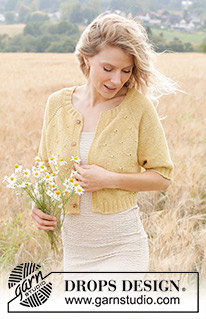






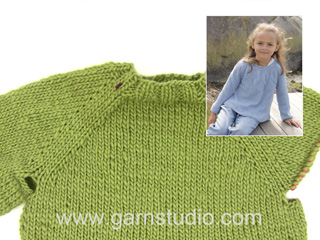


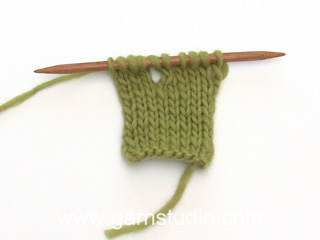

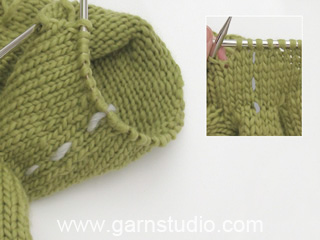




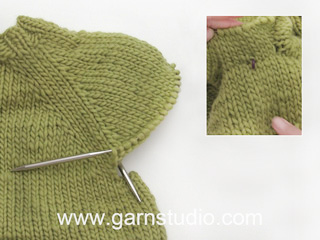
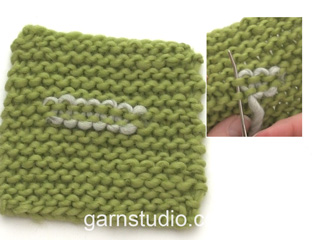

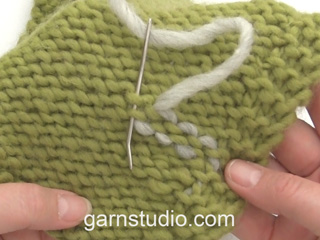
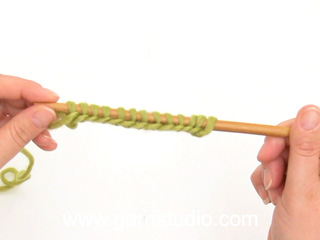
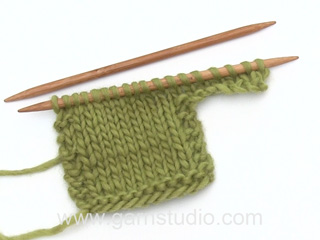
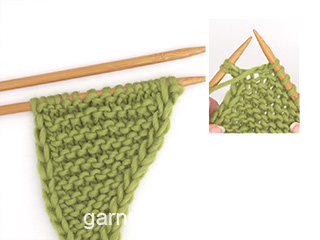

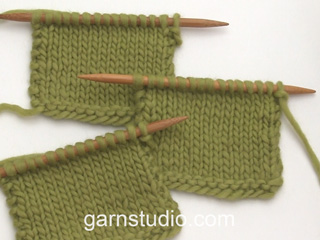


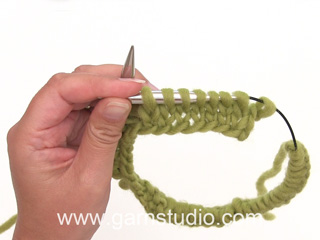
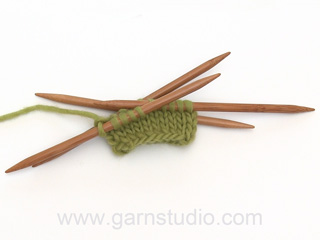
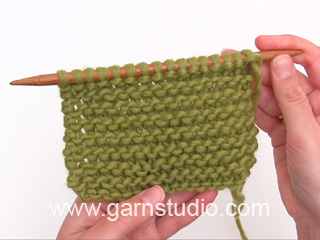
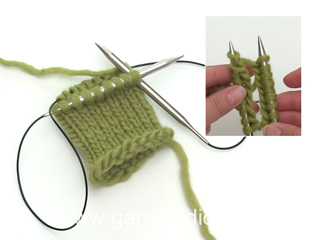
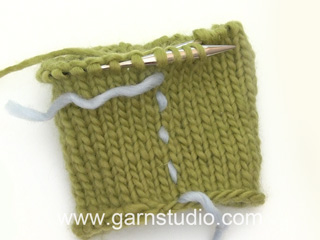






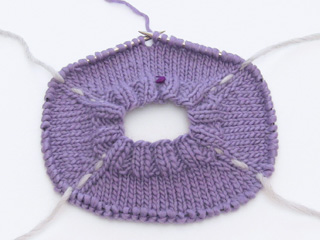











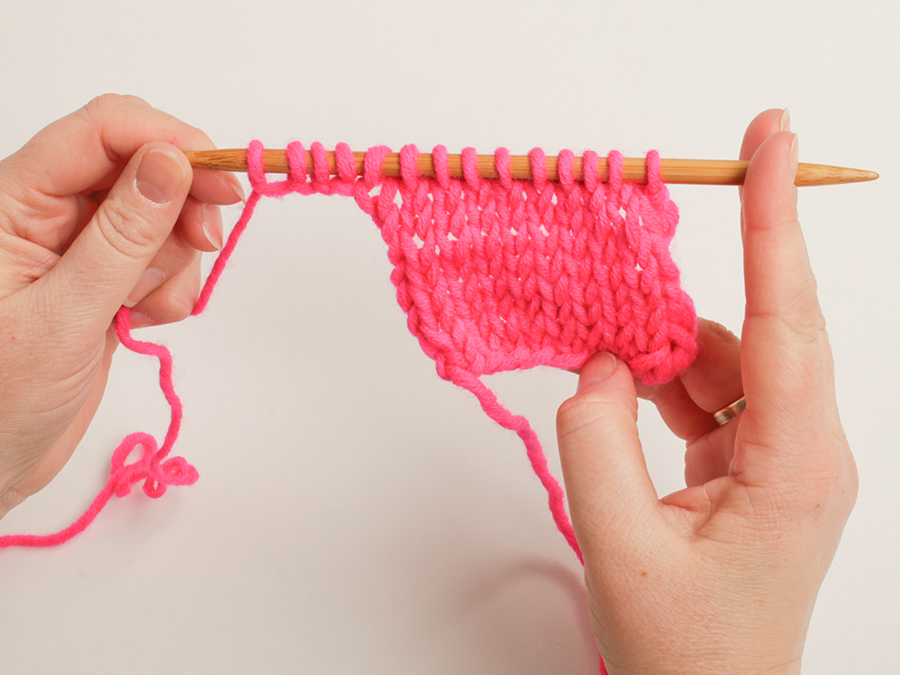









Comments / Questions (23)
I wonder whether the diagrams show only the right side rows or both the right and wrong side rows (when looking from the right side). By the way, is there a general tip for identifying if DROPS pattern diagrams display both right and wrong side rows, or just the right side rows, assuming the wrong side is made based on the instructions and not shown in the diagram? I cannot find a clear indication. Thank you!
21.07.2024 - 20:10DROPS Design answered:
Dear Beata, most of our patterns show all rows, both from the right and wrong side, seen from the right side. In almost all of the patterns, under EXPLANATIONS FOR THE PATTERN, there will be a section called PATTERN, which will specify this. In this case it says: "See diagrams A.1 to A.5. Choose diagram for your size. The diagrams show all rows in the pattern from the right side." So it shows ALL rows in the pattern, but the rows from the wrong side will have to be worked invertedly, so that you see the chart pattern from the right side. Here you have a lesson on how to interpret our knitting charts: https://www.garnstudio.com/lesson.php?id=68&cid=19. Happy knitting!
22.07.2024 - 01:25Can you please tell me if the “purl 3 together…” are made on the right side or the wrong side?
06.06.2024 - 03:24DROPS Design answered:
Dear Mrs Bujorean, they are worked on the right side, just as shown in this video. Happy knitting!
06.06.2024 - 07:50Hallo, ich habe nochmal eine Frage zu den Raglan-Zunahmen. Irgendwie entstehen doch Löcher, obwohl ich es genauso machen, wie in der Anleitung beschrieben. Aber vielleicht habe ich es falsch verstanden. Könnt Ihr mir weiterhelfen? Danke und viele Grüße Doriana
24.05.2024 - 08:14DROPS Design answered:
Liebe Doriana, in diesem Video zeigen wir, wie solche Zunahmen gestrickt werden, beachten Sie vielleicht, daß die Umschläge nicht zu locker sind. Viel Spaß beim Stricken!
31.05.2024 - 08:01Hallo, ich stecke beim I-Cord fest: die 6 Maschen, die in der Beschreibung als "kraus rechts" bezeichnet werden, werden die in der 1. Hin-Reihe rechts oder links gestrickt? Kraus rechts ist ja immer rechts in jeder Reihe, aber dann wären es wieder rechte Maschen auf der Seite, da die 1. Reihe links gestrickt ist. Danke im Voraus, Viele Grüße Doriana
23.05.2024 - 08:26DROPS Design answered:
Liebe Doriana, die Maschen der Blende werden so gestrickt: am Anfang der Reihe: 2 Maschen I-Cord + 6 Maschen rechts, am Ende der Reihe: 6 Maschen rechts + 2 Maschen I-Cord; siehe auch dieses Video (hier stricken Sie aber keine Zunahmen wie im Video). Viel Spaß beim Stricken!
23.05.2024 - 08:44Hej stickar man de tre maskorna i mönstret från rätsidan. Ser ut som avigsidan i mönstret
06.05.2024 - 23:54DROPS Design answered:
Hej Eva, dem strikker du fra retsiden :)
08.05.2024 - 13:55Ich möchte die Jacke in marineblau/dunkelblau stricken. Ist Belle oder Paris dunkler?
05.05.2024 - 17:52DROPS Design answered:
Liebe Karin, Paris würde aber hier keine Alternative sein, da Paris gehört zur Garngruppe C, diese Jacke wird mit Belle (Garngruppe B) gestrickt. Ihr DROPS Händler wird Ihnen gerne die beste passende Farbe - auch per Telefon oder per E-Mail - empfehlen. Viel Spaß beim Stricken!
06.05.2024 - 08:40Tak for dit svar. Har endelig fundet ud af, at en i-cord kan også strikkes med kun 2 masker!
02.05.2024 - 07:29Kan bare ikke forstå det med i-cord..... der står "strik 1 maske ret, og 6 maske retstrik." Ovenpå står der "retstrik: strik ret på hver pind" Kan ikke forstå hvordan det skal strikkes.....
23.04.2024 - 07:00DROPS Design answered:
Hej Moira, prøv at se om du ikke kan finde en video som beskriver det du bliver usikker på: I-cord
23.04.2024 - 15:26Tolle Jacke und die Wolle dazu liegt auch schon vor mir. Leider verstehe ich die Anleitung zu der i-Cord Blende nicht. Ich hebe links ab, habe dann quasi 2 Fäden bei dieser Masche auf der Nadel. Wie stricke ich das in der Rückreihe? Gibt es dazu vielleicht ein Video bei Drops?
19.04.2024 - 12:36DROPS Design answered:
Liebe Ulli, in diesem Video zeigen wir, wie diese beiden Maschen am Anfang / am Ende der Reihe gestrickt werden (nun nehmen Sie hier keine Maschen zu wie im Video). Viel Spaß beim Stricken!
19.04.2024 - 14:53Ljuvlig! Nostalgisk sommarfeeling.
20.01.2024 - 13:25